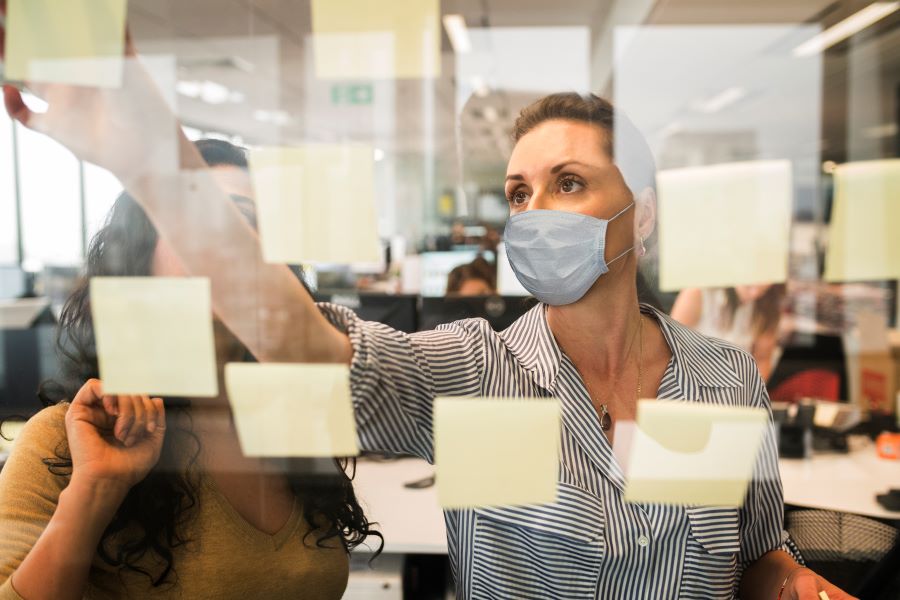
Over the last year, there has been a strong focus within TLScontact and the wider Teleperformance Group on the implementation of Lean Six Sigma methodologies. At TLScontact, this has led to a review of our approach to continuous improvement and the launch of a number of Lean Six Sigma projects across our organisation. Here we address how Lean Six Sigma can benefit a service business like TLScontact, and how it can help enhance customer experience.
What is Lean Six Sigma?
Lean and Six Sigma are two complementary approaches that help organisations to create a problem-solving culture and structure, with the aim of achieving continuous improvement. Lean thinking was developed in the 1950s within the Japanese manufacturing sector, while Six Sigma was introduced in the 1980s by Motorola and soon became synonymous with the manufacturing expertise of General Electric, under CEO Jack Welch.
Over the past 10-15 years, Lean Six Sigma thinking has been successfully applied across the service sector, in banking, finance, government, healthcare, and many other non-manufacturing environments. Over time, the fundamentals of the industrial approach have been interpreted and adapted for services. This includes the identification and elimination of key ‘wastes’. In the service sector, these are: delay, duplication, unnecessary movement, unclear communication, incorrect inventory, an opportunity lost to retain or win customers, and errors in the service transaction. It is possible to measure, analyse and ultimately eliminate each of these wastes, through a structured and data-driven problem-solving approach.
Lean is a management system based on the relentless, continuous elimination of waste. It works towards continuous flow and involves collaborative problem solving, from the ground up.
Six Sigma is a disciplined, data-driven approach to eliminating defects. It involves a more ‘expert-based’ problem solving approach, with people earning different rankings or ‘belts’ as they become progressively more competent in Six Sigma methodologies. These two complementary approaches help companies to drive continuous improvement throughout their organisation.
Lean Six Sigma applied to visa services
At TLScontact, we are applying Lean Six Sigma thinking to our processes, as we strive to create world-class standards. We are also using it to help us identify and implement the right KPIs for our business. Some examples include:
1. Tracking and improving internal quality
We are putting in place new systems to help us record any internal errors in processing applications at our centres, before we transfer these to the relevant government decision-making authorities. Our objective is to encourage our employees to highlight any errors made in real time, so that the root cause can be analysed and the necessary improvements made. This helps us to ensure that we send complete, compliant applications to our government clients every time, and reduces the risk of visa processing delays that we know can have a significantly negative impact on the applicant experience.
2. Improving workforce management
This year, we have introduced new forecasting tools to help us prepare for fluctuating demand and ensure that we have the right resources in place when and where we need them. This has been particularly useful during the COVID-19 crisis, where we have seen considerable volatility in our visa volumes as the pandemic has played out. Forecasting can be long-term (week by week), or short-term, looking at every step in the process inside our centres. We carry out demand analysis across the different process steps, with recommended staffing levels to help our operations teams to identify where and when our agents need to be at any given time. This helps us to improve our efficiency and, ultimately, reduces waiting times for visa customers in our centres.
3. Identifying the right KPIs for our visa application centres
We have introduced new metrics to help us measure and improve performance at our centres. These indicators, strongly aligned with the group’s overall strategic goals, are shared on a regular basis with our local operations teams. Some examples are:
- Applications per worked hour;
- Errors per visa application (internal & external errors);
- Required working hours vs. available capacity & absenteeism;
- Applicant time in our visa application centre;
- Agent training levels compared to precise targets.
The objective is to encourage employee buy-in and involvement in identifying problems and developing appropriate solutions. We want all our employees to be focused on improving the speed and accuracy with which we can process applications at our visa centres, contributing to overall customer satisfaction.
Lean Six Sigma: a cultural change
At the heart of Lean Six Sigma is a change in mindset. With this new approach, we aim to encourage our employees to identify internal errors and then look at root causes, with the aim of eliminating these issues in future. We want to generate the right data to improve our problem solving and encourage a philosophy of continuous improvement, where each and every employee can play their part. The ultimate aim of this approach is total and complete client satisfaction, for both the government administrations that we serve and the visa applicants that we welcome to our centres each day.
Article written by Greg Lane,
Director Continuous Improvement